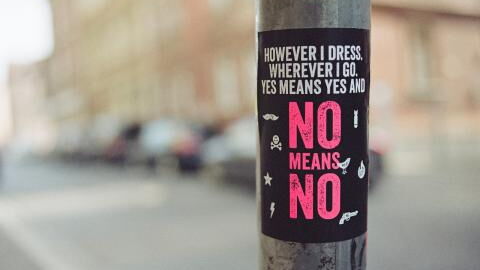In October 2018, actress Bella Thorne revealed that she was dating two people at the same time, which sent the media into a frenzy. There aren’t many public figures that identify as openly polyamorous, and for many, it was their first exposure to the type of lifestyle. While confusing to many, Thorne and her two partners assured the public that their relationship was healthy, loving, and harmonious.
Discover our latest podcast
For people like Thorne, monogamy just isn’t for them.
What is polyamory?
Polyamory is the practice of engaging in multiple consensual romantic relationships. The Polyamory Society goes on to describe it as 'the nonpossessive, honest, responsible, and ethical philosophy and practice of loving multiple people simultaneously.' One of the major emphases of polyamory is that individuals should have a say in how many partners they wish to be involved with instead of following the societal norm of monogamy.
Polyamory doesn’t refer to anyone’s sexual orientation, just the amount of partners they have, and anyone can be polyamorous. It’s a common misconception that polyamory is the same as an open relationship; polyamory allows for sexual, romantic, and emotional intimacy, while open relationships are intimate relationships that are sexually non-monogamous. Polyamory is also not to be confused with polygamy, which involves being married to multiple partners.
Another misconception is that polyamory is similar to adultery, but, unlike adultery, polyamory is consensual and disclosed to everyone involved. Polyamorous relationships can take on plenty of different forms, and there is no 'improper' way to go about being polyamorous.
History of polyamory
Despite what people believe, non-monogamy is nothing new—in fact, it dates back to B.C.E. times, where these relationships were fairly normal. However, it is important to note that the form polyamory took in these times was fairly different from the form it takes on now. In the past, these types of relationships often had gender imbalances, where men could have multiple partners, but women could not.
Scientists conclude that humans didn’t start out monogamous, and that these types of relationships grew to be the norm due to health and financial reasons. In the mid-to-late 1800s, there were various communities in America that practiced polyamorous relationships.
Fast forward to the sexual revolution of the 1970s, and polyamory has made a more mainstream comeback. With the 'Free Love' movement, people became far more free-spirited and open to this type of dynamic. As a result, polyamorous communes started popping up nationwide. However, the word 'polyamorous' didn’t make its first debut until May of 1990.
Where are we now?
As of 2019, 1 in 5 Americans has participated in a polyamorous relationship. As with most things, the Internet helped polyamorous communities evolve at the speed of light. With these communities came larger support systems, more representation, and an easier way to seek other polyamorous people out. Additionally, polyamorous communes still exist globally.
As of 2020, nearly 16 million people are practicing a 'non-monogamous style of relationship.' Dating apps have even grown to be more inclusive of polyamorous people, like #Open, Feeld, and OkCupid. Additionally, media is starting to respectfully represent polyamorous relationships and characters by showing the complexity of these dynamics and squashing any negative stereotypes these relationships carry.
Key figures
Morning Glory Zell-Ravenheart, a Neopagan community leader, is credited with coining the term 'polyamory' in 1990. In 1999, the Oxford English Dictionary requested that she provide them with a definition of the word, which she described as 'the practice, state or ability of having more than one sexual loving relationship at the same time, with the full knowledge and consent of all partners involved.' Though she passed in 2014, she spent her entire life being a zealous advocate of polyamory and, thanks to her efforts, helped validate its existence in the modern world.
How can I be an ally to poly people?
- Don’t assume everyone is monogamous. Monogamy isn’t the only option for people, and being polyamorous is far more common than you think. Being open-minded from the beginning is a great way to show support for poly people in your life.
- Don’t invalidate polyamorous preferences. Many poly people, once they come out, are met with lots of rash judgments. People are always quick to say 'I could never do that myself!' without realizing how hurtful these types of statements are. In the same way monogamy isn’t for everyone, polyamory isn’t for everyone and that’s okay!
Be respectful of their privacy. People often conflate being polyamorous with being sexually promiscuous, and, as a result, can be quick to pry and ask questions regarding their sexual lives. Even though this is a huge misconception to begin with, it’s important to be respectful of people’s private lives.















